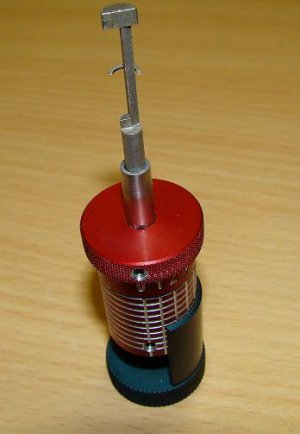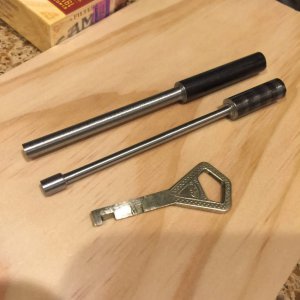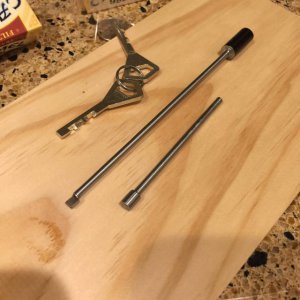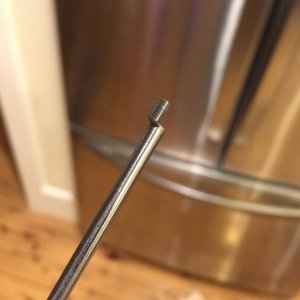- Joined
- Mar 5, 2018
- Messages
- 17
I am completely new to machining and on the cusp of buying both a 7x16 lathe and mini mill. The primary purpose of the these machines will be locksmith tools/prototypes. A very common tool for lever locks is known as a two in one pick. Without a lathe and mill the finger/flag would be silver soldered to the round shaft.
I'm unsure about the best way to mill the circumference around the finger or flag part of the tool using a single solid piece of steel.
Right now the only thing I can think of to accomplish this would be to mount the tool vertically and than rotated under mill using a rotary table. Is there other ways to accomplish this or is that proper way to machine it?
Here are some pictures of a store bought "two in one" pick.
Chubb Battleship Pick
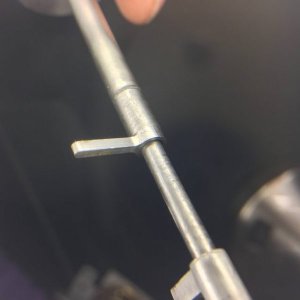
I'm unsure about the best way to mill the circumference around the finger or flag part of the tool using a single solid piece of steel.
Right now the only thing I can think of to accomplish this would be to mount the tool vertically and than rotated under mill using a rotary table. Is there other ways to accomplish this or is that proper way to machine it?
Here are some pictures of a store bought "two in one" pick.
Chubb Battleship Pick

Last edited:

